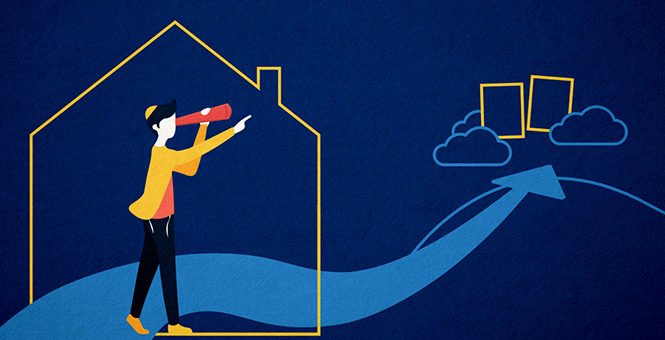We humans appreciate consistency, knowing when, how and where something will happen. We schedule appointments and try to fill our calendars as far in advance as possible. This is why, as traumatizing as our experiences of slavery in Egypt were, we somehow managed to find comfort in that lifestyle.1 We knew our daily tasks (however oppressive they were), what we’d be eating, and when we’d be sleeping. This didn’t just happen in Egypt; sadly, it occurs in our present day with most people who experience trauma or abuse, whether in relationships, at school or in the workplace. One of our greatest human abilities is to adapt to our surroundings, allowing us—usually far more often than is healthy—to get used to any number of living circumstances and settle.
Any mode of change is challenging. Imagine way back when starting school for the first time, moving out of our parents’ home for college, trying to start leading a healthier lifestyle, or learning a new hobby. We can’t just shift gears overnight. Change—and especially personal growth—takes time. Sometimes, though, the unexpected happens and we’re forced to transition instantaneously. This is what occurred when G‑d took us out of Egypt; we left in such haste that we weren’t even given enough time to pack proper sandwiches!
From the beginning, G‑d made it clear to Moses (and Pharaoh) that leaving Egypt wasn’t our final goal.2 G‑d had loftier aspirations for us: first to gift us the Torah on Mt. Sinai and then ultimately to bring us to the Promised Land. But imagine giving a gift of high value, such as an expensive watch, to an infant not yet mature enough to appreciate it . . .
Developing Across the Lifespan
Our journey from Egypt to the Promised Land parallels our journey through life. Life begins at conception. We spend 9 months in our mother’s womb, doing nothing but developing our physical faculties and their many potentials. Like our Egyptian enslavement, these months are highly predictable (at least from the fetus’s perspective). We know that we’ll be fed, can sleep whenever we wish, and have no responsibilities. Then suddenly, we’re forced out of the confines of the womb, make our way through the Sea,3 and now have to begin making meaning out of this “new” life. As we develop, we push boundaries and succeed in some areas while making mistakes in others. We may even spend 40 years “in the desert” before beginning to get our life on track and transitioning out of Adolescence. Hopefully, we’ll meet a nice Jewish man or woman, get married, and grow into the Golden Years together, working as a team to reach our Promised Land.
Jewish tradition likens Shavuot, the festival celebrating the Giving of the Torah, to the wedding day between us and G‑d. There was thunder and lightning, the shofar was blown,4 and the Torah served as our wedding contract. But successful marriages take effort. Getting married isn’t just something we do because everyone else does it; rather, it’s entering into a relationship in which we both take our individual “I”s and unite them into a shared “we.” To do so, we first need to know our “I.” We need to know ourselves—both our positive traits and the areas we need to work on. We need to know our goals and priorities, and what choices we need to make and actions we need to take to set our sails in those directions.
Who Are We?
We repeatedly learn in Jewish mysticism5 that we each have two components that make up who we are: our G‑dly soul (responsible for all spiritual pursuits, such as meditation or study) and our animalistic soul (responsible for our physical needs, such as eating, drinking, going to meetings or playing sports). We need both aspects. Our animalistic drive is divided into seven faculties,6 each of which helps us complete the many tasks in our day. If our Exodus from Egypt represents our birthing process and Shavuot is our wedding day, then the weeks leading up to this grand event symbolize our introspection and investment in getting to know, and refining, our true selves. During these seven weeks, known as Sefirat HaOmer,7 we explore each of our seven physical drives in-depth and spend a full week crystalizing each one.
In Judaism, the number seven always symbolizes a complete cycle: we celebrate Shabbat every seven days to complete our week and remember that G‑d created our world in seven days; we count seven Sabbatical years and 49 (7×7) Jubilee years; our ritual purification involves a seven-day period;8 and most rituals of a Jewish wedding involve the number seven.9 And so, we count seven full weeks between Passover and Shavuot because G‑d wants this transition to be as smooth, natural and genuine as possible. We count seven weeks because change is within our nature and capabilities. We’re always able to get to know ourselves better and transform who we are. We’re never stuck in the way we may have gotten used to living (whether positive or destructive).
Shavuot During COVID-19 and Beyond
For many of us, this seven-week journey hits home hard. In what feels like the blink of an eye, we’ve shifted from busy, organized calendars to unpredictability, virtual schooling and cancelled vacations. Unfortunately, many of us have also lost friends or relatives. In very real ways, we’re forced to recreate a “new” life for ourselves in these very strange and trying times. But every dark cloud has its silver lining; instead of turning outwards and mending the world around us as we’re accustomed to doing, we’re able to focus our attention inwards to slow things down and get to know ourselves again.
The Torah introduces this seven-week journey with the word lachem, “for you,”10 because it can only be successful if done personally. Just like no two weddings or relationships are exactly alike, the pace and practice of personal growth and development is unique to each of us. In life, we get a return on what we invest in—individually, interpersonally, and spiritually. As we emerge from the 2020 pandemic of COVID-19 (hopefully very soon) and look back on how we spent our days, what return on investment will we see? What will our personal growth portfolio look like? What dividends will be able to collect?
Just as a bride and groom solidify all that they’ve worked towards so far in life under their chuppah, and then take those talents and collectively begin the next chapter of their lives together, so too will we take what we learned and how we grew during this time and infuse it into the years that lie ahead. The choice is ours—let’s own it and make the most of it! Footnotes 1.
This idea is mentioned many places throughout the Torah, and in later commentaries and works ofChassidut. 2.
G‑d first mentions this to Moses in Exodus 3:8, Moses first informs Pharaoh of this in Exodus 5:1, and this is mentioned several times throughout the first half of the Book of Exodus. 3.
In the metaphorical sense, we can compare the splitting of the waters of Reed Sea and us walking through on dry land to that of a child emerging from its mother’s womb and passing through the birthing canal. 4.
One such example is the first two chapters of Tanya. 6.
These faculties are: chessed (loving-kindness, which prompts us to give), gevurah (strength, which teaches us how to receive), tiferet (beauty, which enables us to mediate when to give and when to limit that giving), netzach and hod (victory and splendor, which enable us to persevere), yesod (foundation, which help us make commitments) and malchut (royalty, which helps us take all our talents and abilities and practically achieve results). 7.
Literally, “the counting of the Omer [Offering].” 8.
For details of many of these seven-day purifying rituals, see Leviticus 12-15. 9.
Seven days prior to their wedding day, a bride and groom separate to crystalize any last-minute personal preparations; a bride circles her groom seven times beneath their chuppah; there are seven blessings read under the chuppah; and there are seven joyous meals celebrated with the bride and groom during their first week as a married couple.



